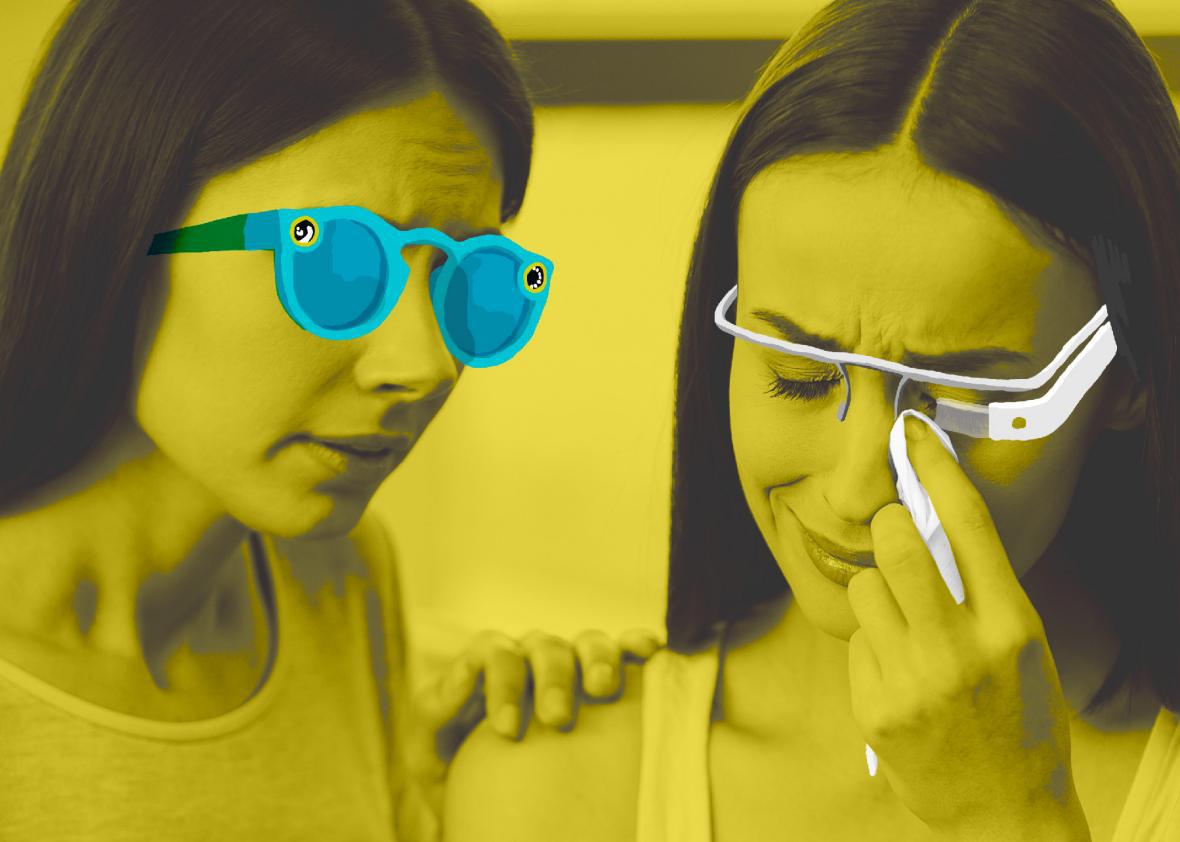Apple is reportedly pouring resources into its next big project: an augmented reality headset. According to a report Wednesday from Bloomberg, Apple hopes to have the technology ready by 2019 for a 2020 ship date. While current and proposed augmented-reality software applications, like Facebook’s Camera Effects platform, are garnering excitement, the augmented reality hardware space hasn’t yet had a hit product. Apple could change that.
Apple CEO Tim Cook has made his enthusiasm for augmented reality clear. “I regard it as a big idea, like the smartphone. The smartphone is for everyone,” Cook told the Independent in February. “I think AR is that big, it’s huge. I get excited because of the things that could be done that could improve a lot of lives. And be entertaining.”
In its August earnings call, Cook said that he thinks augmented reality is “big and profound.” In an interview with CNBC, he went on to say that he believes augmented reality will make the iPhone “even more essential” than it already is.
But to date, dedicated augmented reality products have landed with a dull thud.
Google Glass was the first big push in this direction. However, it suffered early on as it was only adopted by techies (and primarily white guys, as this popular Tumblr documented). To the masses, the device was a joke, and those wearing it, nerds.
More recently, Snapchat entered the fray—although more accurately, the camera-laden glasses space, rather than the augmented reality space. (Its second-generation glasses would reportedly include augmented reality). But it may never get a chance to ship those: Snapchat’s Spectacles were a flop. The company reportedly lost more than $40 million on unsold Spectacles.
Both of these products failed for similar reasons. They both struck out in the looks department. Google scored no points with fashionistas with its futuristic-looking nerd glasses, while Spectacles veered the opposite direction, with a goofy, cheap aesthetic. They also both missed on price point. At $1,500, Google Glass remained a product for the 1%. And Snapchat’s lenses—even a far more reasonable $130—also cost more than potential buyers valued it.
And in terms of features, both products were rather limited. Spectacles can only be used to capture photos and videos in a circular format. Google Glass had photo-taking capabilities along with head-tracking, Google Now notifications, and stats such as the current time overlaid in its small heads-up display, but practical, game-changing applications never pushed it out of the “novelty” zone.
Apple, however, is in the position to succeed in all three of these areas. The company has a history of design and marketing successes. Apple’s product design team, headed by Jony Ive, is responsible for the overall look and feel of products. Apple’s marketing chief, Phil Schiller (who’s been with the company for 25 years), then takes on the task of making sure everybody wants that product. As we’ve seen with the Apple Watch, Apple knows how to design what could be a “techie” product and make it desirable for the masses. The Apple Watch is currently the most popular watch in the world. Asymco estimates its sales at more than 33 million since its launch. The Cupertino company accomplished this first by keeping screen size in perspective—some Android Wear watches, by comparison, have ludicrously large screens—and by ensuring wearers could make it a style statement with both its own and third-party band options. It also gave the object caché with expensive, higher-end options—watches can be a status symbol, after all—while simultaneously offering more affordable options. This ensured it didn’t only get purchased by the obscenely wealthy.
For an augmented reality “headset” (read: glasses), we can assume Apple would follow a similar approach. It would come in classic designs that would actually look good on your face and come in enough variants that you could actually configure a pair that you like, too.
And then there’s the experience. While Google Glass had a handful of third-party apps and services on board, it never really caught on with developers in a big way. With ARKit already available, Apple is setting the groundwork for a robust augmented reality app ecosystem long before its dedicated hardware even lands. By the time its headset comes out, we’ll already be comfortable using a variety of augmented reality applications—and ideally, we’ll be ready to put our phones down and strap on a headset instead.
Apple is patient. It has been sitting by the sidelines, watching what competitors have done thus far in the space. This line, which Ive said at a tech panel in October, is key: “There are certain ideas that we have, and we are waiting for the technology to catch up with the idea.” Apple is in no rush to push its augmented reality headset out until battery life, display technology, and computational power are strong enough to give the headset a positive stand-alone experience. (Unlike today’s augmented reality and virtual reality headsets, Apple doesn’t want the headset to rely on your smartphone as its engine or its screen, Bloomberg reports.) Apple did this with the iPod. It did it with the iPhone. And it did it with the Apple Watch, too.
On top of all this, Apple also has its loyal fan base, a mixture of people who obsessively love the brand and those who’ve bought enough Apple products that it just doesn’t make sense to buy into another product ecosystem. This is something both Google and Snapchat didn’t have when they launched their hardware.
At more than two years away, we’ve got a long time before we see Apple’s augmented reality hardware efforts come to fruition. But you can bet that when it does, we’ll finally be ready to wear smartphone technology on our faces.
